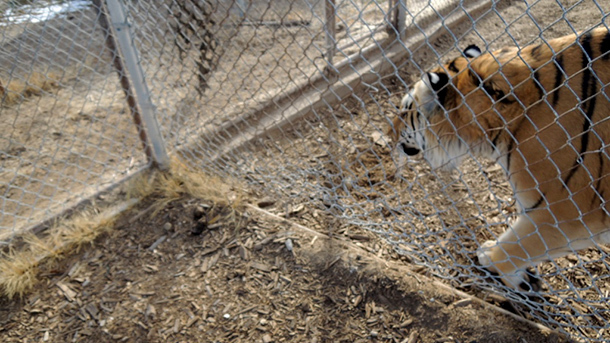tigers rescued from cub petting operation, part 1
tigers rescued from cub petting operation, part 1

Note: This article is the first in a multi part series explaining cub petting.
Turpentine Creek Wildlife Refuge and Tigers in America had the opportunity to step in and rescue over a hundred big cats from a cub petting operation when the owner of a Colorado roadside zoo and cub petting operation fell ill earlier this year.

The two organizations bought the land and arranged for the donation of all animals to Turpentine Creek. Their intent was to end the cub petting and improve the care of 110 big cats, who were being housed on only 12 acres of land. IFAW was there to help, providing a grant to transport some of the animals to legitimate sanctuaries where they will be able to peacefully live out the rest of their lives.
Cub petting is the practice of using baby animals, like tigers, as photo props for paying customers. These operations are deceptive because they prey on people’s affection toward baby animals, and exploit the desire to hold or care for them. This masks a secretive dark side, inherently dependent on animal cruelty for its very existence.
The first victims are adult female tigers. Some cub petting operations engage in “speed breeding” - the practice of removing baby cubs from their mothers days or even hours after they are born. In the wild, a female tiger will stay with her cubs and care for them for as long as 2 years, which means that even the most successful wild mothers only produce a litter once every 3 years. In contrast, when cubs are removed from their captive mother she can be quickly bred again, producing litters as often as three times in one year. The strains of frequent breeding can compromise the health of the mother.
The second victims are the cubs. Removed from their mother as infants, they are fed from a bottle and passed from stranger to stranger, often for hours at a time with no rest. This can lead to dehydration and psychological stress. It can also lead to illness, as their immature immune systems are not equipped to cope with diseases they may be exposed to, such as Canine Distemper Virus (CDV) domestic dogs can carry. CDV is known to be lethal for big cats. Bottle feedings can lead to malnutrition if an inadequate formula is used, or if the kittens and cubs aren’t switched to a solid diet at an appropriate age. Transition to a solid diet may be delayed in an effort to prolong the amount of time the cubs can be used to generate profit. The resulting malnutrition often presents as metabolic bone disease (MBD), a condition in which bones become weak and easily break because of insufficient calcium in the diet.
Last to be victimized is the public. Pay for play operations may tell you that by paying to pet, hold or feed the babies you’re helping conservation. They often say their breeding efforts are helping save endangered species. The truth is the vast majority of tigers in roadside zoos in the United States are hybrids. That is, they’re a cross between different subspecies of tigers, (for example, Bengal tiger crossed with Malayan tiger). That means that even if there was a place to release them into the wild, these animals can’t be released because they never existed in the wild in the first place. Introducing hybrid genetics into wild ecosystems violates international best practices as it can negatively impact wild populations. The continued breeding of hybrid cats offers no conservation value, and this misleading message dilutes the impact of true conservation efforts.
Unfortunately, cub petting is not illegal in the U.S. IFAW is working with a coalition of organizations to encourage the USDA to close the loophole that allows the public to handle big cats between the ages of 8 and 12 weeks (currently the only age at which it’s legal for them to be handled). We’re also working on a single nationwide policy that will protect big cats, making it illegal for individuals to own or breed them.
--Meredith Whitney
Related content
Our work can’t get done without you. Please give what you can to help animals thrive.